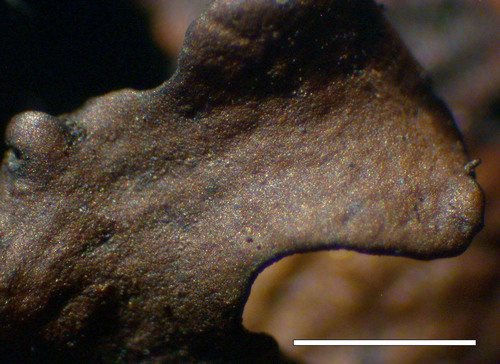Click on Characteristic name for explanation. Click on image for larger version.
|
Umbilicaria polyphylla
| Overview
| | PNW Range: | | | West side | Occasional
| | East side | Occasional
| | Immediate coast | Rare
| | Alpine or subalpine | Occasional
| | Habitat: | Exposed to shaded rock outcrops and talus, most common in moist forested parts of the PNW.
| | Substrate: | Rock (noncalcareous).
| | Comments: |
| | Synonymy: | none
|
|

Upper cortex
by B. McCune
1/3

Lower cortex
by B. McCune
3/3
Scale: Bar=1mm unless noted
|
|
|
|
|